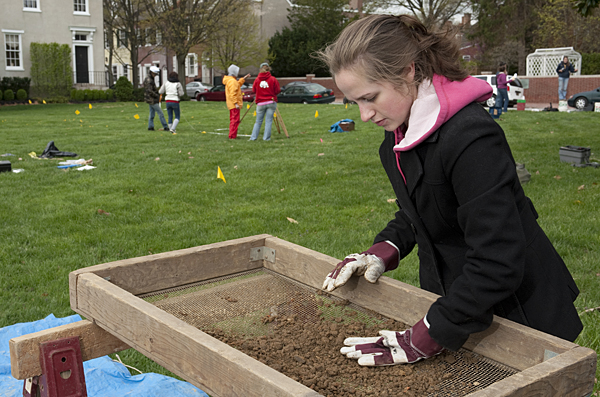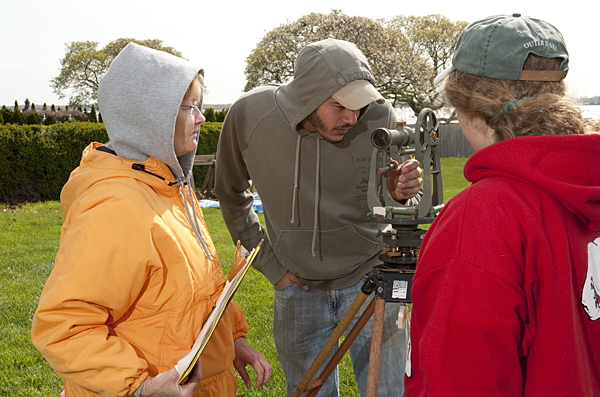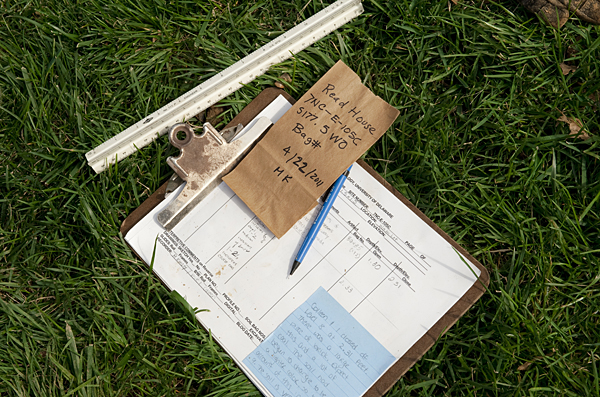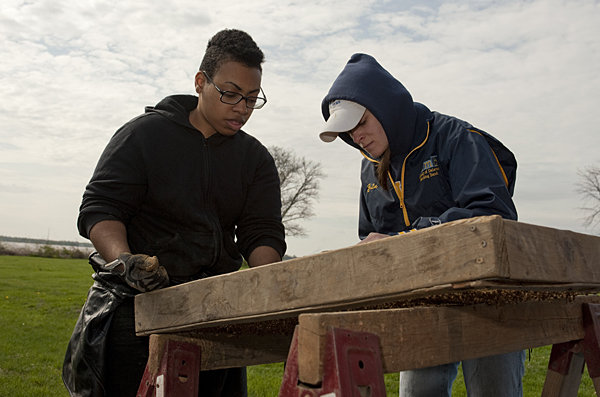


Unearthing New Castle's past
Anthropology students excavate artifacts from Delaware's colonial capital
11:41 a.m., May 3, 2011--The anthropology and material culture studies students are getting their hands dirty.
With shovels and trowels, dustpans and dental picks, the 19 undergraduates in Introduction to Archeological Field Methods have spent the semester surveying, mapping and excavating the four-acre riverfront lot of New Castle’s historic Read House and Gardens. Read their blog.
Research Stories
Chronic wounds
Prof. Heck's legacy
Their archeological fieldwork on the 22-room mansion, which was built by the son of Delaware’s George Read, an original signer of the Declaration of Independence and the Constitution, is part of a larger, two-decade long project to piece together the past of Delaware’s colonial capital.
Led by a University of Delaware anthropology professor, Lu Ann De Cunzo, the multi-year study, in partnership with the Historical Society, aims to preserve and interpret archeological remains on the museum ground. While it has trained nearly 70 high school and college students since its inception in 1994, this is the first time De Cunzo has included a semester-long classroom component in which undergraduates attend class on the Read House site and perform excavations of the property.
“New Castle remains the least studied North Atlantic coastal colonial capital,” she says, “and the town’s unique, nonrenewable, fragile archeological remains offer a spectacular opportunity to explore the past in the present.”
Since March, the students have spent each Friday in the field, mapping, excavating and conducting soil and artifact samples.
“This isn’t a discipline you can just learn from a book,” says junior anthropology major Elanor Sonderman, while scraping the borders of a three-and-a-half foot hole. “You can’t really understand stratigraphic sequence or collection and processing until you’re in the ground.”
In addition to the archeological fieldwork, the students have also performed historical research on the property and previous owners of the land.
As an anthropology and women’s studies double major, senior Marissa Kinsey was fascinated to discover a last will and testament that left specific instructions for the living arrangements of the deceased’s wife and slave.
“Objects alone aren’t enough,” she says. “Part of the satisfaction of discovering artifacts is learning more about the people who used them.”
Since De Cunzo began her fieldwork more than 15 years ago, she and her team of student archeologists have excavated more than 70,000 artifacts, including objects from 17th-century Dutch-American Indian exchanges as well as well-preserved remnants of early colonial structures, such as wells and kitchens.
On the Read House property, the current undergrads have found numerous ceramics pieces and other smaller relics — glass, shells, coal, bricks, and even a toy airplane from the 1960s. But for De Cunzo, one of the most interesting findings has been the relative “cleanliness” of the land.
“There’s very little garbage,” she says.
Also surprising is that the students have yet to unearth any naturally occurring soils, suggesting that the historical Delaware Riverbed was deeper than the documents and ground penetrating radar (GPR) have recorded. The shoreline has been filled in on numerous occasions beyond the recorded filling in 1805.
“Part of what makes this so interesting,” says De Cunzo, “is that everything has a story.”
The students will present their findings and discuss the archeological process of surveying, digging and preserving artifacts at a special public presentation at the Read House on Friday, May 13, at 2 p.m.
Article by Artika Rangan
Photos by Kathy F. Atkinson











